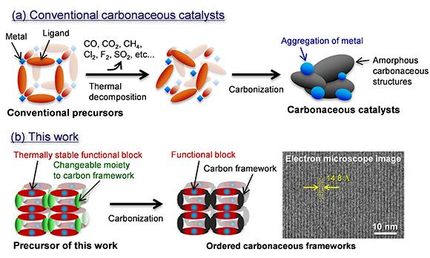New catalysts for solar hydrogen production
Researchers at TU Wien are developing a layered photocatalyst that can be used to produce hydrogen very efficiently from water
Advertisement
Finding sustainable and clean fuels is crucial in today’s global energy and climate crisis. One promising candidate that is increasingly gaining relevance is hydrogen. However, today’s industrial hydrogen production still has a considerable CO2 footprint, especially considering processes like steam reforming or non-sustainable electrolysis.
A team led by Prof. Dominik Eder from the Institute of Materials Chemistry (TU Wien) is therefore focusing on the development of environmentally friendly processes for obtaining hydrogen, for example by photocatalysis. This process enables the conversion of water molecules to hydrogen aided by nothing but light and a catalyst. Through this process, the sun’s abundant and clean energy can be stored in the chemical bonds of this so-called solarfuel. Recently, the results have been published in the scientific journal „Advanced Energy Materials”.
Novel photocatalysts
When producing green hydrogen by photocatalysis, the catalyst plays a crucial role. In contrast to industrial catalysts, a photocatalyst utilizes the energy of light to facilitate the splitting of water at room temperature and ambient pressures. Among the most promising candidates are metal-organic frameworks, so called MOFs. They are made up of molecular inorganic building units held together by organic linker molecules. Together, they form highly porous 3D networks that have an exceptionally large surface area and excellent charge separation properties.
However, most MOFs are only active under UV light irradiation, which is why the community alters the organic compounds to make them capable of absorbing visible light. However, these modifications have a negative influence on the mobility of the electrons. Another limitation concerns charge extraction, where the electrons are released from the material: „While MOFs are indeed great at separating charge carriers at the organic-inorganic interfaces, their efficient extraction for catalytic use remains a challenge”, Dominik Eder explains.
Recently, MOFs with layered structures have caught a lot of attention for use in optoelectronic applications, as they exhibit greatly improved charge extraction properties. „You can picture these layered structures as a Manner Schnitte, where the waffle is the inorganic part and the chocolate is the organic ligand holding them together”, Pablo Ayala, lead-author of the study, illustrates. „You just need to make the waffle part conductive.”
Challenges in water splitting
In contrast to 3D-MOFs a layered MOF is usually non-porous, which reduces the catalytically active area to the external surface of the particles. „Hence, we had to find a way to make these particles as small as possible”, Eder explains. However, nanostructuring of materials is often accompanied by the introduction of structural defects. These can act as charge traps and slow down the extraction of charges. „Nobody likes a Manner Schnitte with missing chocolate”, Ayala proceeds with his comparison. "In the case of photocatalysis, we also need the best possible material that can be produced."
Therefore, Dominik Eder's team developed a new synthesis route in which even the smallest crystalline structures can be produced free of defects. This was achieved in collaboration with local and international universities. The novel, layered MOFs are based on titanium and have a cubic shape of just a few nanometers in size. The material has already been able to achieve record values in photocatalytic hydrogen production under the influence of visible light.
Aided by computer simulations carried out at Technion in Israel, the team was able to unravel the underlying reaction mechanism and demonstrated two things: First, that the layered nature of the MOF is indeed key to efficient charge separation and extraction. Second, that missing-ligand defects act as unwanted charge traps that need to be avoided as much as possible to enhance the material’s photocatalytic performance.
The research group is currently designing new layered MOFs and exploring them for various energy applications.



































































